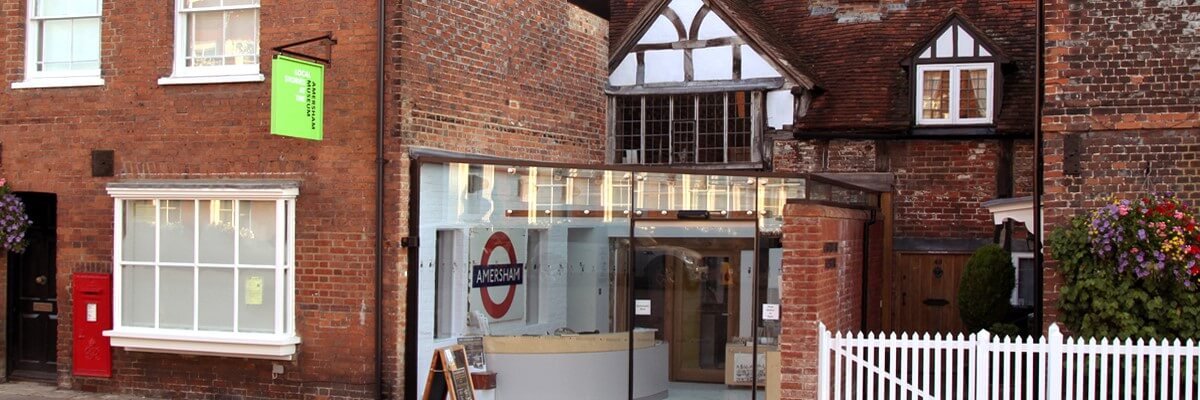This article about a talk given by Janet Dineen to the Amersham Society and was written by Jo Worrall for the Amersham Society/Amersham Museum newsletter and is reproduced here with permission.
Cooking is a subject in which most people have an interest, either because they are cooking themselves or enjoying the results of someone else’s efforts. In Janet Dineen’s case it is researching into past methods of preparing food particularly in Buckinghamshire. Janet began her fascinating presentation by reminding us that she had spoken to the Society on a previous occasion when her subject was lace making in Amersham and Bucks and she related some of the recipes ascribed to that period.
Apparently lace-makers allowed themselves only one day off a year, apart from Sundays. In Amersham this was traditionally St. Catherine’s Day, colloquially known as Catterns whereas in North Bucks St. Andrew’s Day was chosen and that was known as Tanders. We were told of customs on that day, such as drinking a rich mead potion, methaglin with toast floating on top, thought to be the derivation of drinking ‘a toast’ (this from the Olney area), Wigs, (mentioned later), and Frumenty, a special wheat dish.
Some of the recipes were used only in certain areas and these had been carefully researched in Aylesbury Records office where some original cookery books are stored, particularly one from Shardeloes and another from Chequers Mansion. It was suggested that the old books were written by the ladies of the house as dictated by the possibly illiterate cook. Others were almost indecipherable to the untrained eye, however our speaker, Mrs Dineen then painstakingly reproduced dishes in her own kitchen using as many of the original ingredients as possible. She only had to substitute ‘modern’ foods occasionally and admitted to using an electric food processor only when the more traditional pestle and mortar proved too difficult.
At the end of the evening we were invited to try some of the delights that had been cooked at her home although throughout the talk we were shown how some of the dishes were mixed ready for cooking.
The Potted Cheshire Cheese (from the Shardeloes, pre 1776 book) was very popular and would be equally acceptable today as were Almond Cheesecakes from the same collection. The Lemon Pudding was very similar to recipes of today but a certain degree of ingenuity is required as no cooking times were given! Perhaps we should be more grateful than we admit in having easily regulated ovens with automatic timers!
We were also told of Mrs Crawley’s Mushroom Amlet, which was quite a rich omelette. The recipe entitled ‘To Dress a Sham Turtle’ was not greeted with enthusiasm as it required boiling a calf’s head and other interesting parts of the animal which are not as readily available to today’s cooks.
From the Chequers collection Wiges were described using ‘Ye lady Lovelases Way.’ These were small bread rolls with caraway seeds and the earliest recipe dated 1676 from the Chester Estate near Newport Pagnell was for Lemon Biscuits containing ground almonds and were prepared very much as today using a piping bag with large nozzle, described in the recipe as ‘your skwirt’!
Creslow Pastures, north from Whitchurch, was the largest area for beef cattle from Tudor times until the Commonwealth. ‘The Magazine of Domestic Economy’ October 1838, stated that Buckinghamshire was said to produce the best bacon in England. Aylesbury ducks were much more plentiful than they are now, as were crayfish. Watercress was grown much more widely, particularly in Waterside, Chesham and Sarratt.
Apparently figs for making Fig Pudding were a local speciality on Palm Sunday. Black cherries or croons were especially good in pies also Cherry Bumpers and Bumpkins, a kind of turnover, and Game Pie, really a terrine, was a speciality of the Kings Head Inn, Aylesbury. Probably best of all was a quote from John Brazil ‘Pigs were fed on barley husks collected from a tip behind Maltings in Barn meadow or Rectory Meadow. It was said that Amersham could boast the fattest, happiest pigs in the county’.

